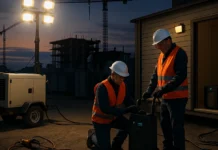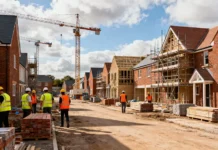Sustainability and brine management are key topics
As regions like Florida and Texas continue to expand, developers are racing to keep pace with the demand for new homes, master-planned communities, and commercial zones, and water infrastructure remains a key challenge.
In many areas, especially those prone to water scarcity, traditional freshwater sources are already under pressure. Aging infrastructure, prolonged droughts, and other climate impacts exacerbate the problem. This can affect permitting, development timelines, and the long-term viability of these communities, which all depend on reliable water availability.
Accelerating Time-to-Market With Alternative Water Sources
To accelerate approval processes, prevent construction delays, and ensure that communities have access to a sustainable water supply, forward-thinking developers are turning to alternative water supplies such as desalinated brackish groundwater and seawater. With the help of modern desalination technologies and decentralized treatment solutions, it’s possible to bring clean, reliable water to new developments without overloading city infrastructure.
This approach accelerates building timelines, allows residential units to go onto the market sooner, and builds in a layer of resilience that appeals to municipalities, regulators, and future residents alike.
The Big Challenge: Managing Brine Responsibly
While desalination offers a sustainable alternative water supply, it presents challenges of its own. The process removes salt and other impurities from water, producing a concentrated byproduct known as brine. This saline waste stream contains high levels of salt and possibly leftover pretreatment chemicals, and sometimes has elevated temperatures or acidity. All of those can harm sensitive ecosystems. Managing brine waste responsibly is essential to preventing environmental damage and ensuring regulatory compliance.
Desalination doesn’t have to come with an environmental cost. Providers are deploying carefully designed systems that blend science with stewardship to facilitate responsible brine management. These systems incorporate advanced tools such as marine diffusers, discharge modeling, and ongoing environmental monitoring to ensure that brine disposal meets strict local and federal regulations.
Smart Design Strategies for Brine Risk Reduction
When designing a brine management system, engineers must consider local environmental conditions, hydrology, and regulations. Some common disposal methods include:
- Surface-water discharge. If permitted, discharge can be injected into streams or bays after on-site dilution.
- Subsurface diffusers. Coastal outfalls leverage marine currents for safe brine dispersion.
- Deep-well injection. Geologically suitable inland areas can store brine underground, but this often involves costly permitting.
- Evaporation ponds/soil application. In arid zones, brine is often concentrated through evaporation or used to irrigate salt-tolerant plants.
Each option requires careful environmental and technical assessments supported by ongoing monitoring. For developers in coastal or water-stressed inland areas, partnering with an experienced provider that handles the complexities of sustainable brine management can streamline permitting approvals and reduce environmental and reputational risk.
Best Practices for Water-Smart Development
When it comes to responsible desalination, the key to success lies in thoughtful planning and incorporating brine disposal strategies in the early design and feasibility phases. Waiting can result in expensive redesigns, permitting delays, and community opposition.
Equally important is choosing the right partners, those who have knowledge and expertise and can provide advanced tools like concentrate modeling, custom-designed ocean or creek discharge systems, and environmental monitoring. Partners who specialize in delivering desalination systems pre-engineered with environmental safeguards and real-world data can simplify approvals and ensure compliance.
Builders’ Benefits: Faster Approvals, Lower Risk, Greater Sustainability
Projects with their own sustainable water supply and a responsible brine management strategy have a distinct advantage over competitors. Four key benefits include:
- Speed to market. By eliminating dependency on municipal water infrastructure, developers can obtain water on-site early in the project, which speeds up construction timelines, allowing units to be completed and put on the market sooner.
- Smoother permitting. Desalination projects supported by a robust brine management plan that demonstrates responsible disposal can speed up the permitting process.
- Reduced regulatory risk. Brine management systems that include demonstrated environmental safeguards ensure regulatory compliance, reducing the risk of fines.
- Enhanced brand value: Sustainable practices can build a positive reputation with municipalities, buyers, and local stakeholders, enhancing brand value.
Building with Water in Mind
Sustainable water management is no longer just a municipal responsibility. Builders and developers are incorporating water infrastructure into their projects early. Whether you’re breaking ground on a master-planned community or fast-tracking a commercial business hub, planning for water supply and waste management from the start can ensure that your project stays on schedule, complies with evolving regulations, and contributes to a water-secure future.
By embracing desalination and responsible brine management, developers gain a significant competitive advantage with faster permitting, more resilient utilities, and increased market appeal.






























